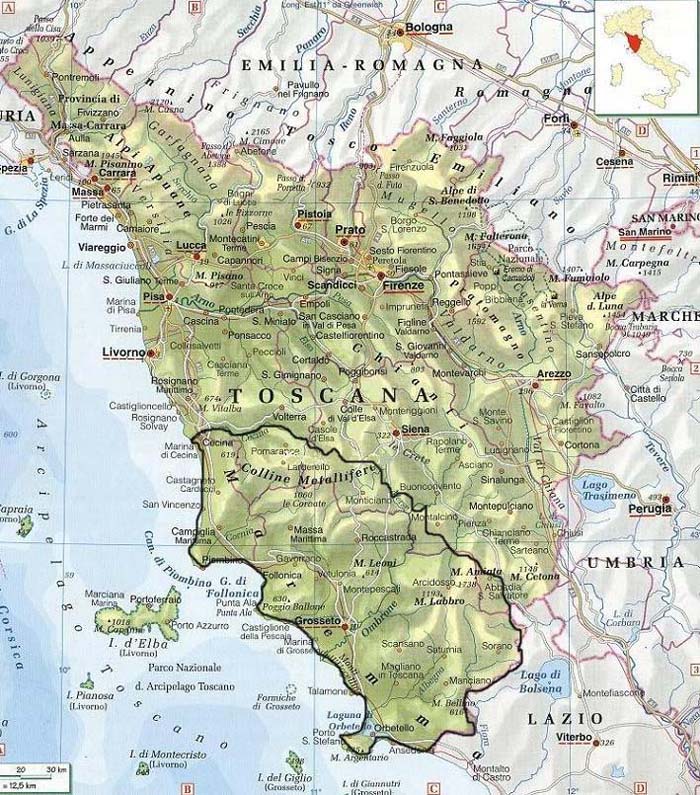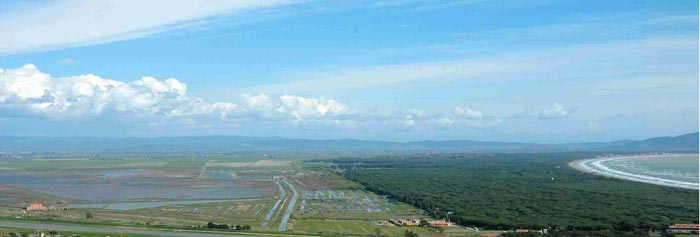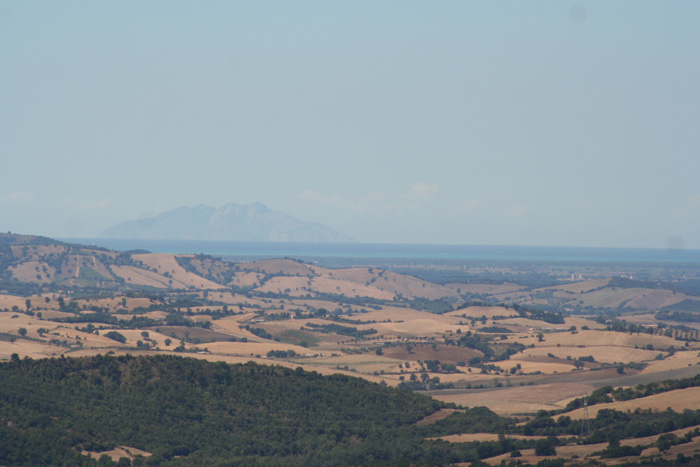Podere Santa Pia, situated in a particularly scenic valley, which overlooks on the hills around Scansano, up to the Maremma seashore and Montecristo. Montecristo was immortalised by the novelist Alexandre Dumas as the location for a stash of buried treasures in his novel The Count Of Monte Cristo. The garden is very shady, also during the summer. Instead of green, the fields are ablaze in that golden yellow you see on postcards, with the typical bales of hay which appear in every golden field by mid July. |
| The Maremma is a vast area in Italy bordering the Tyrrhenian Sea, consisting of part of south-western Tuscany - Maremma Livornese and Maremma Grossetana (the later coincident with the province of Grosseto), and part of northern Lazio - Maremma Laziale (in the province of Viterbo and Rome on the border of the region). The poet Dante Alighieri in his Divina Commedia places the Maremma between Cecina and Corneto, the former name of Tarquinia.
It was traditionally populated by the Butteri, cattle-breeders who until recently used horses with a distinctive style of saddle. Once unhealthy because of its many marshes, the Maremma was drained during the fascist regime and re-populated with people coming from other Italian regions, notably from Veneto. In the Maremma region various popular wines are produced, some of which gained DOCG status, Montecucco, Morellino di Scansano and Maremma Toscana. When it comes to Tuscan wine, organic varieties have found important applications and supportive enthusiasts and the Maremma boasts great organic farms and biodinamic vineyards.
|
 |
Maremma, map |
The Maremma Grossetana can be divided into 5 main areas, each with its own characteristics and attractions. * Alta Maremma (Upper Maremma) is the northern part of the Maremma region, right on the border with the Province Siena. This area is characterised by the many picturesque hilltop villages (Pitigliano, Roccastrada, Roccatederighi, Sassofortino, Monte Massi, Massa Marittima, Cinigiano, Campagnatico, Pari), which remind of the hilltop towns of the Siena area.
|
 |
|
The Maremma | Beaches, marinas and reserve
|
One of the most interesting areas of Tuscany, between Follonica and Castiglione della Pescaglia, thanks to its beaches, tourism port at Punta Ala and the Etruscan monuments at Vetulonia. This area is also very interesting for its nature, with the State Natural Reserves of Tomoboli di Follonica and Scarlino, including the inlets of Cala Martina, Cala Francese and Cala Violina. The hinterland of Castiglione della Pescaia hosts one of the most important wetlands of the Tuscan coast: the Natural Reserve of Diaccia Bortona, where the small WWF Oasis of Marze is located. Beyond the historic centres of Castigllione della Pescaia, Vetulonia and Scarlino, the villages of Buriano and Tirli as well as isolated archeological monuments like the Roman villa of Puntone and the Etruscan necropoli of San Germano and Poggio Tondo are all worth visits. |

